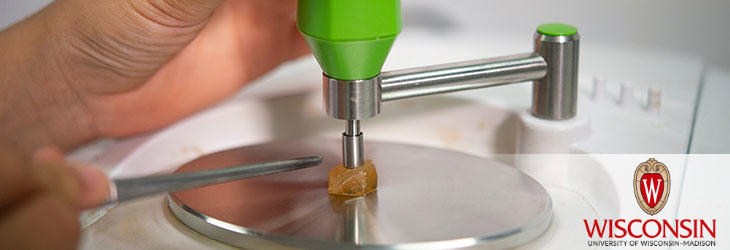Research Tools

Synthesis of High-Density Oligomer Microarrays
WARF: P05183US
Inventors: Franco Cerrina, Viktoriya Golovkina
The Wisconsin Alumni Research Foundation (WARF) is seeking commercial partners interested in developing a method for synthesizing large quantities of oligonucleotides and other chain molecules.
Overview
To save time and costs, many alternatives to conventional DNA sequencing have been proposed. One approach utilizes an array of oligonucleotide probes (short nucleic acid chains) synthesized by photolithographic techniques. In this process, DNA synthesis chemicals are exposed to light through patterning masks, building up levels of nucleotide bases until the desired set of probes is generated.
Drawbacks to this process include the high cost and large number of precision masks that are required. In response, patterning processes that don’t require multiple masks have been developed for creating arrays of probe sequences, polypeptides and other large chain molecules. This has led to the ability to synthesize oligomers in high-density microarrays on flat glass substrates.
However, low yield remains a problem. Boosting oligomer production simply by increasing the active area of the substrate is not practical.
Drawbacks to this process include the high cost and large number of precision masks that are required. In response, patterning processes that don’t require multiple masks have been developed for creating arrays of probe sequences, polypeptides and other large chain molecules. This has led to the ability to synthesize oligomers in high-density microarrays on flat glass substrates.
However, low yield remains a problem. Boosting oligomer production simply by increasing the active area of the substrate is not practical.
The Invention
UW–Madison researchers have developed an automated method for synthesizing arrays of oligonucleotides and other chain molecules in relatively large quantities. The process involves (1) a substrate with an active surface on which the arrays will be formed and (2) a light-emitting object array having selectable light and dark areas defining the image that will be projected onto the active surface.
Projection optics made up of a system of four mirrors receive the light emitting from the object array and image the pattern. The four mirrors are arranged to form a 2X magnified image of the object array at the active surface, thus substantially increasing the area of each element in the array in which oligomers are formed.
For synthesizing oligonucleotides, a flow cell may be incorporated which encloses the active surface of the substrate and has ports for supplying DNA reagents.
Projection optics made up of a system of four mirrors receive the light emitting from the object array and image the pattern. The four mirrors are arranged to form a 2X magnified image of the object array at the active surface, thus substantially increasing the area of each element in the array in which oligomers are formed.
For synthesizing oligonucleotides, a flow cell may be incorporated which encloses the active surface of the substrate and has ports for supplying DNA reagents.
Applications
- Synthesizing oligonucleotides and other chain molecules
Key Benefits
- Produces larger quantities of oligomers
- Offers 2X magnification
- The use of mirrors cuts down on aberration and dispersion of light.
- Increases the fidelity of synthesized oligomers
Additional Information
Related Technologies
Tech Fields
For current licensing status, please contact Jennifer Gottwald at [javascript protected email address] or 608-960-9854